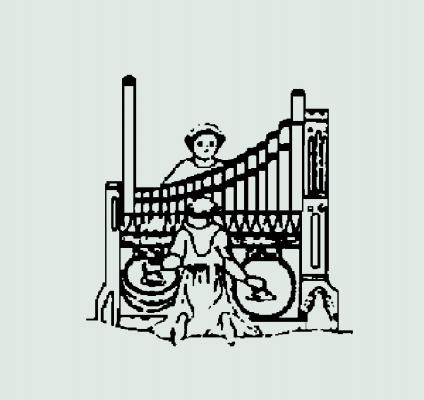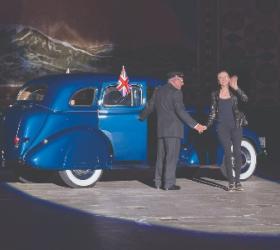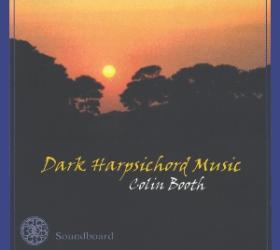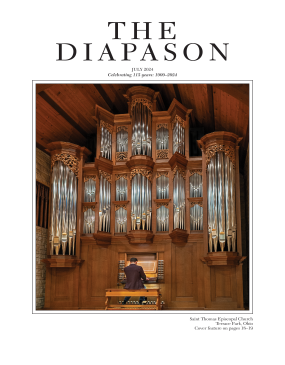
My past article on the “Seven Golden Rules of Organ Practicing”1 started with the provocative statement, “Let’s not beat around the bush,” and it fits so well again in this controversial context. Let us admit it again: we are often too lazy and the nose is stuck high as we think we are such splendid sight readers, when, in fact, only some among us can claim that rather limiting skill.
Limiting? Really? Why? Well, according to the Harvard Dictionary,
sight reading: The ability to read and perform music at first sight, i.e., without preparatory study of the piece. This type of playing makes entirely different demands on the performer from those of ordinary finished playing. In fact, from the technical as well as the psychological point of view, it is its very opposite, so that accomplished pianists and virtuosos are very poor at sight reading.2
So, you will be glad to know that you are better off by needing a little help with fingerings. What can fingerings do, you might ask?
They can do wonders, and they can at the same time waste your time massively when applied in the “old fashioned way.” That is, the learning of a new complex organ score of Romantic and possibly contemporary music (the eras I am addressing here) either sinks or swims, because of fingerings. If it swims securely within a reasonable amount of learning time, I call it smart fingerings. Should the results sink because of too many mistakes and lots of tension and technical nervousness, then the call is to look for some serious help via this article.
Again, let’s not beat around the bush. Almost every organist, even the most famous, could use a little help and hopefully discover a much easier way after going through today’s assignment: an extremely slow reading of my fingered score of the fugue from Josef Rheinberger’s stunning Sonata No. 17 in B-Major. (See Examples 1 and 2, the first two pages of the Rheinberger fugue.)
B-major, of all things: wide reaches, lots of nice sharps, great double sharps, lovely naturals, just the right “playground” (or is it really hell?) to test our lousy sight reading skills. I think we’d better grab that sharpened pencil quickly for some smart ideas on fingering.
The basic question comes to mind: Do you like to cook? And do you cook without a cookbook? I hope so! It is actually a similar issue when experimenting with smart fingerings to get that “technical taste” just right. As there are basic, fundamental rules in cooking (with salt being the most dangerous ingredient I can think of), so also there are some fundamental rules necessary even to dream of “cooking up” smart fingerings.
Provocatively enough, your piano fingerings may be “a start,” but they are indeed limiting for the complexities of the organ repertoire. By the time we are in that kitchen of “goodies” in the key of B-major, well, it’s time to get the skillet and oven just hot enough in the right manner, so we do not burn our fingers. And yes, we burn them all the time by way of impossible tension among and in the fingering patterns, and by not knowing that the cast-iron wrist (so handy for some painful tendonitis) is the best excuse to quit practicing altogether. After all, the doctor will “advise ya so,” not knowing the clever way out of this devilish situation.
Luckily, there are organists, myself for example, who never have had such uncomfortable excuses, even after hours and hours of competition practicing. The No. 1 “ingredient” for such freedom is a very relaxed and tensionless wrist/hand/arm combination. Otherwise expressed, in a military tone of voice here, “DO NOT LOCK UP!!!” Answer: “Yes, Sir!”
Smart fingerings depend on that very important “culinary principle,” namely, no tension! When observed 100%, you suddenly can consider experimenting and try totally new aspects of fingerings your past organ training and teaching never have revealed to date (or declared legal to apply)!
Want another chuckle? OK, how about saying that such wild experimental “ingredients” could be called “cheaters.” Want to call them that? Yes, you should gladly, as we are going to learn here “how to cheat” to be ahead of the rest of “them” organists and literally beat the past!!!
The word “cheating” comes in handy here, as it conveniently and ever so happily pushes that awful spider technique, otherwise known as the godlike legato, into the uncomfortable corner it so richly deserves to occupy. It is exactly those terrible legato habits that prevent us from considering trying the following “cheater techniques,” namely:
Smart Fingerings
These general “cheater techniques” for complex organ scores are going to surface here:
Use a given finger twice. Yes, it could be any one of our ten puzzled and troubled fingers, depending on the particular score situation. Or for chuckles’ sake, and for shouting out the truth, let us “shove off much consecutivity” and “shove off substitution” as much as possible.
Substitution is probably the worst enemy of quick, effective learning, just like my reference to salt and cooking without a book, as it not only slows down the learning speed, it also wastes at least 50% of energy available. Substitution also destroys a certain amount of clarity in sound ethics (which we are going to discuss a bit later on).
Just think for a moment how this awareness might benefit you. It will get rid of certain finger tensions and, yes, it may chop your lovely old-fashioned spidery legato to bits. But when applied at the right spot, it will actually provide clarity and assure superb results via the natural cheater technique, ridding you and your audience of this “gooey cheese-like sound quality.”
Sound quality from fingerings, you wonder? “Come on!” you say! Now we seem to be cooking with too much garlic. But hold on, it’s just that right amount of garlic that we are looking for when talking about
Sound Ethics
Sound ethics are actually sound preferences of our time today, which should influence our choice of touch and fingerings. Why would one ever want to copy Straube’s chordal, thick Reger legato today on instruments that are designed on totally different concepts, and (hopefully) for something better than an acoustically dead music-school hall?
To be more specific, we need not resort to the same “dish of fingerings” as instructed by such historic figures as Straube when playing complex, loud passages today. Our tastes have changed to the point that gooey touch qualities in the Romantic repertoire are painful to endure.
Organ registrations of forte through fortissimo usually require a more pointed touch in general to be clear in a large and wonderful Romantic acoustical environment. Therefore, we are safely “cooking” by using fingers occasionally twice, and, as is often quite necessary, to use our thumbs in the alto or tenor often two, three, or even four times in a row to manage the complexities of the score without getting technically knotted up.
We can call that a happy grasshopper technique, as opposed to an oily thumb snowboarding technique that produces an ever so glue-like artificial legato, a truly horrible effect on such impressive large organ registrations. What we are seeking today is clarity, much like a translucent shade, which allows for some light to shine through the window instead of the unrelenting darkness of unbroken legato.
But our grasshopper can jump only if our base wrist is helping with the jumps! Finger jumping by itself alone is not at all comfortable or successful. A loose wrist action is essential.
Let’s look at another smart cooking spice:
Crossing Over at the End
when we should “really” have been given by God a sixth finger! Wow, that’s a delicious one, going 1-2-3-4-5-4! Or call that simply the little pinky cover up—for chuckles’ sake!
Yes, time for another good and healthy chuckle over past misleadings. Why cross painfully under with the thumb when crossing other fingers over looks even more elegant, even with a nice roll-off to the sides, causing totally relaxed technical ease and even teasing a nice smile upon the “landing.”
Yes indeed, yummy cooking and what a timesaver in practicing! But don’t stop here. Other fancy options for crossovers “to the side” do exist, such as 1-2-3-4-3, or 2-3-2-3-4, especially when sharps are involved along the way, as well as for the final key to provide the happiest of “landings.” Even a daring 1-2-3-4-2 can work occasionally, causing a convenient articulated shift of the hand in just the right context and preparing the hand for upcoming reaches.
Ready for another violation? Bear with me; the cooking lesson is almost over, but it’s not over until it’s over, and we are almost at the end, and the best always must come last. Since we are now factually using some of the same fingers twice or more in a row, and since we are now aware that coordination on the organ is among the hardest skills to achieve, the “best cheater trick in town” well might be
Parallel Simultaneous Fingerings
These are the “cooking tricks” when in both hands the same fingers are used at the very same time, or are possibly slightly offset with respect to each other. (See Examples 1 and 2 loaded with these wonderful spicy cookies.)
Parallel fingerings are tricks that hold the score together, so to speak. You really can grab on to such and feel securely in control with an often very underestimated tool capable of repairing many difficult measures. Discovery depends on your priorities, and my priority is not a given slur marking of the composer.
Again, remember that, in general, larger slur markings should not have priority over fingering decisions, as they do not at all indicate legato playing in the first place or in most cases. Larger slur markings, especially in works of Josef Rheinberger and Max Reger, are more to be interpreted as fashionable slurs for musical indications of direction and tension, than as indicators of actual touch markings. Of course, there are always exceptions, but let’s chuckle again in saying, if we do not have twenty fingers, the spider hardly can manage to see its prey through the murky ink of some Romantic scores.
Another chuckle? Well, while we are at it anyway, I have not seen anyone yet able to reach two octaves in one hand or manage the wide intervals in Rheinberger’s compositions either. The point here in summary: why be a spider in pain when by using natural innovative fingerings, such tasks suddenly become effortless, resulting in so much practice time to spare.
With the above brief motivation and generalization “at hand,” approaches to smart fingering considerations should be easily understood via the provided assignment example by playing slowly through the Rheinberger fugue of this article.
It will be necessary to keep all of the above in mind when reading this provocatively fingered score, as every measure is loaded with examples from the preceding technical suggestions. Notice that progressions of thirds never are assigned to the finger pairs of 3-4, 4-5, and seldom to 1-2 and 2-3, leaving it to the best pairs of 1-3, 2-4, and 3-5. The fingered score also advises avoiding placement of the 1st and 5th fingers on sharps as much as possible. The lazy finger pair 4-5 also is given plenty of “vacation time” throughout the score for very obvious reasons.
Finger Characteristics
Let us reflect briefly on some characteristics of fingers 1 through 5 within our suggested parameters and what is reflected in the fingered score.
1 = best and busiest finger within our grasshopper technique. Also, a finger that quickly shifts the hand to new starting positions, and one able to reach large intervals, including “take overs” from another voice, alto or tenor.
2 = a very fast finger and about as long as No. 4, favors No. 3 for trills and No 4. for thirds. This finger is a secure choice for huge crossover shifts onto natural and sharp keys and might be even the choice starting finger of a virtuoso passage instead of starting such with the 5th finger. No. 2 is also a “helper” in open passagework to take over one note or more with partner No. 3 easing technical issues and energy (as well as saving incredible amounts of practice time).
3 = is quite similar in character in its natural ability to No. 2, but somewhat by nature “at war” with No. 4 for repetitive figuration work. No. 3 is possibly our strongest finger and should be assigned for huge jumps, often starting passagework. He is also among the “helper crew” in open passagework for either hand.
4 = secure and fast for starting passagework. Never plays an interval of a third within a passage with No. 3 as partner, only in five-part chordal texture may No. 4 even talk to No. 3. He will be civil, but barely will smile due to a spastic feeling.
5 = seems to be the little cute sonny-boy that wiggles and sort of laughs on the side when all the other fingers are busy showing off their virtuosity. On occasion, No. 5 will then just tip in a note here and there. However, sonny-boy is the right word, as that fellow finger is relatively lazy and weak in passagework. Wow, that finger loves octaves and big chords, especially when the wrist of the hand provides the energy especially during mechanically coupled manuals. I hear him singing out of tune frequently: You got no wrist, then take the risk. Therefore I have long decided to give tiny sonny-boy No. 5 much “beach time,” so he is freshly energized when asked to perform reliably. He also sings: You may not need me, but do feed me. Thus, we will surely treasure him from time to time.
Summary
Fingerings, your own included, must be questioned at all times. But keep in mind, no critique is fair until you have found a better solution that speeds up the learning process and improves coordination, including coordination between pedal and manuals. And yes, we always should be ready to look for better solutions, which are simply called learning to spice up your cooking with smarter fingerings.
The fingered score of Rheinberger’s stunning fugue is meant to serve as a learning example. Each measure could be cause for lengthy discussions and other possible options. It is, however, intended to cause the serious organist to wonder and, it is to be hoped, discover attitudes for achieving amazing technical facility, clarity in sound ethics and polyphony without destroying the Romantic line, tension and direction, thus serving as an example for other works to be studied in the future.
It is my hope that our mutual chuckles over our “cooking lesson” can give rise to a critical viewpoint and general awareness of better choices that are available to us when it comes to “smart fingerings”—the best kept secret of most major prize-winners in organ competitions, past and present! May I be so humble as to say it is my hope that this article might turn out to be one of the best organ lessons you have experienced.
Enjoy the cheater fun!




